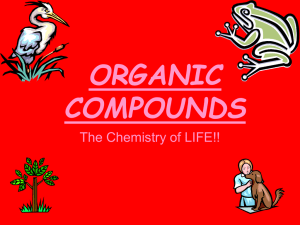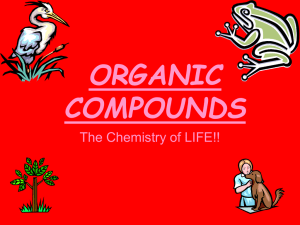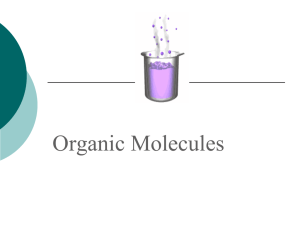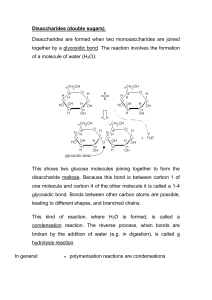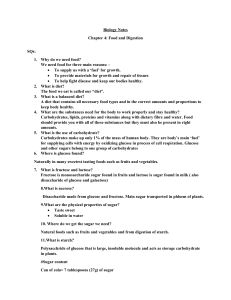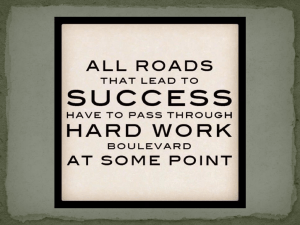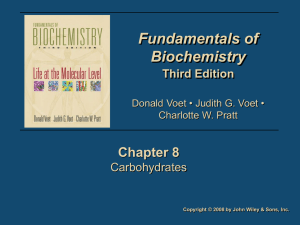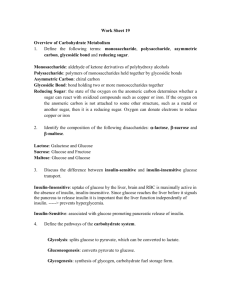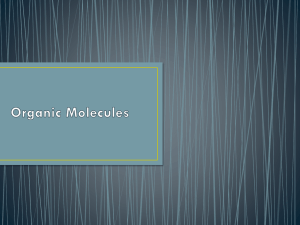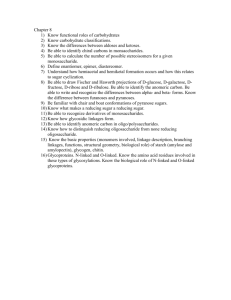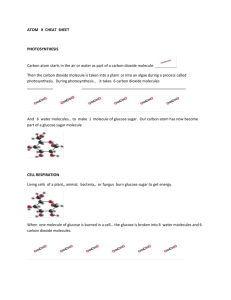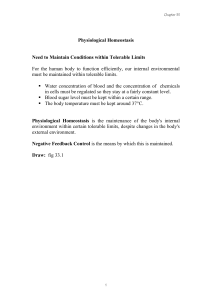Reading Guide
advertisement
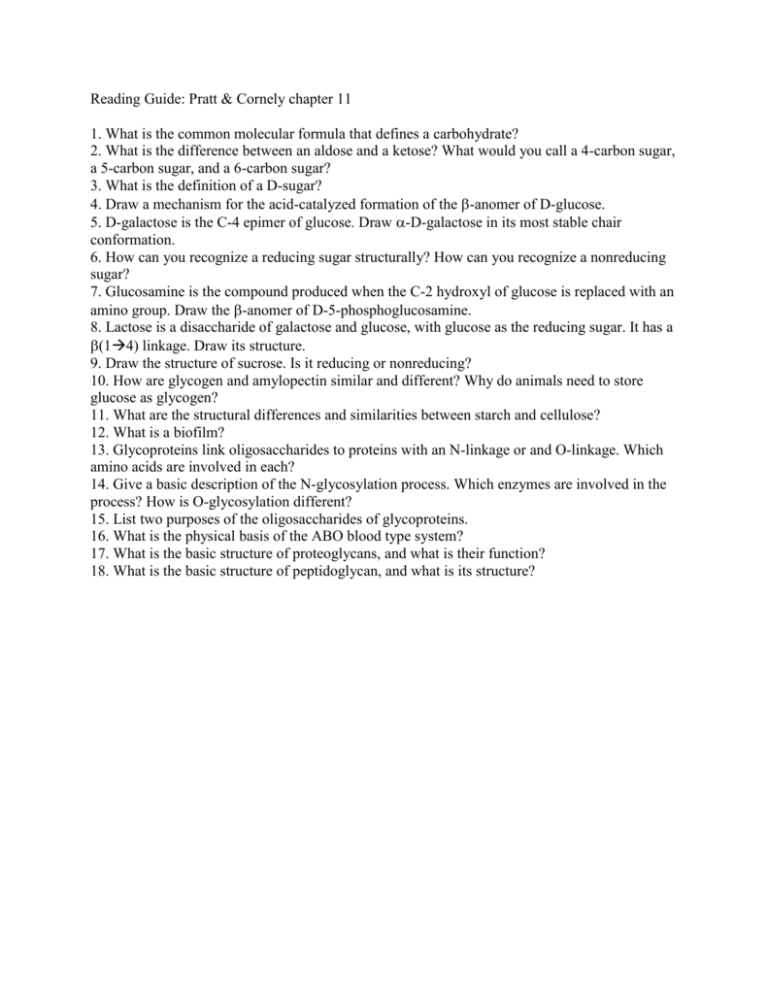
Reading Guide: Pratt & Cornely chapter 11 1. What is the common molecular formula that defines a carbohydrate? 2. What is the difference between an aldose and a ketose? What would you call a 4-carbon sugar, a 5-carbon sugar, and a 6-carbon sugar? 3. What is the definition of a D-sugar? 4. Draw a mechanism for the acid-catalyzed formation of the -anomer of D-glucose. 5. D-galactose is the C-4 epimer of glucose. Draw -D-galactose in its most stable chair conformation. 6. How can you recognize a reducing sugar structurally? How can you recognize a nonreducing sugar? 7. Glucosamine is the compound produced when the C-2 hydroxyl of glucose is replaced with an amino group. Draw the -anomer of D-5-phosphoglucosamine. 8. Lactose is a disaccharide of galactose and glucose, with glucose as the reducing sugar. It has a (14) linkage. Draw its structure. 9. Draw the structure of sucrose. Is it reducing or nonreducing? 10. How are glycogen and amylopectin similar and different? Why do animals need to store glucose as glycogen? 11. What are the structural differences and similarities between starch and cellulose? 12. What is a biofilm? 13. Glycoproteins link oligosaccharides to proteins with an N-linkage or and O-linkage. Which amino acids are involved in each? 14. Give a basic description of the N-glycosylation process. Which enzymes are involved in the process? How is O-glycosylation different? 15. List two purposes of the oligosaccharides of glycoproteins. 16. What is the physical basis of the ABO blood type system? 17. What is the basic structure of proteoglycans, and what is their function? 18. What is the basic structure of peptidoglycan, and what is its structure?
